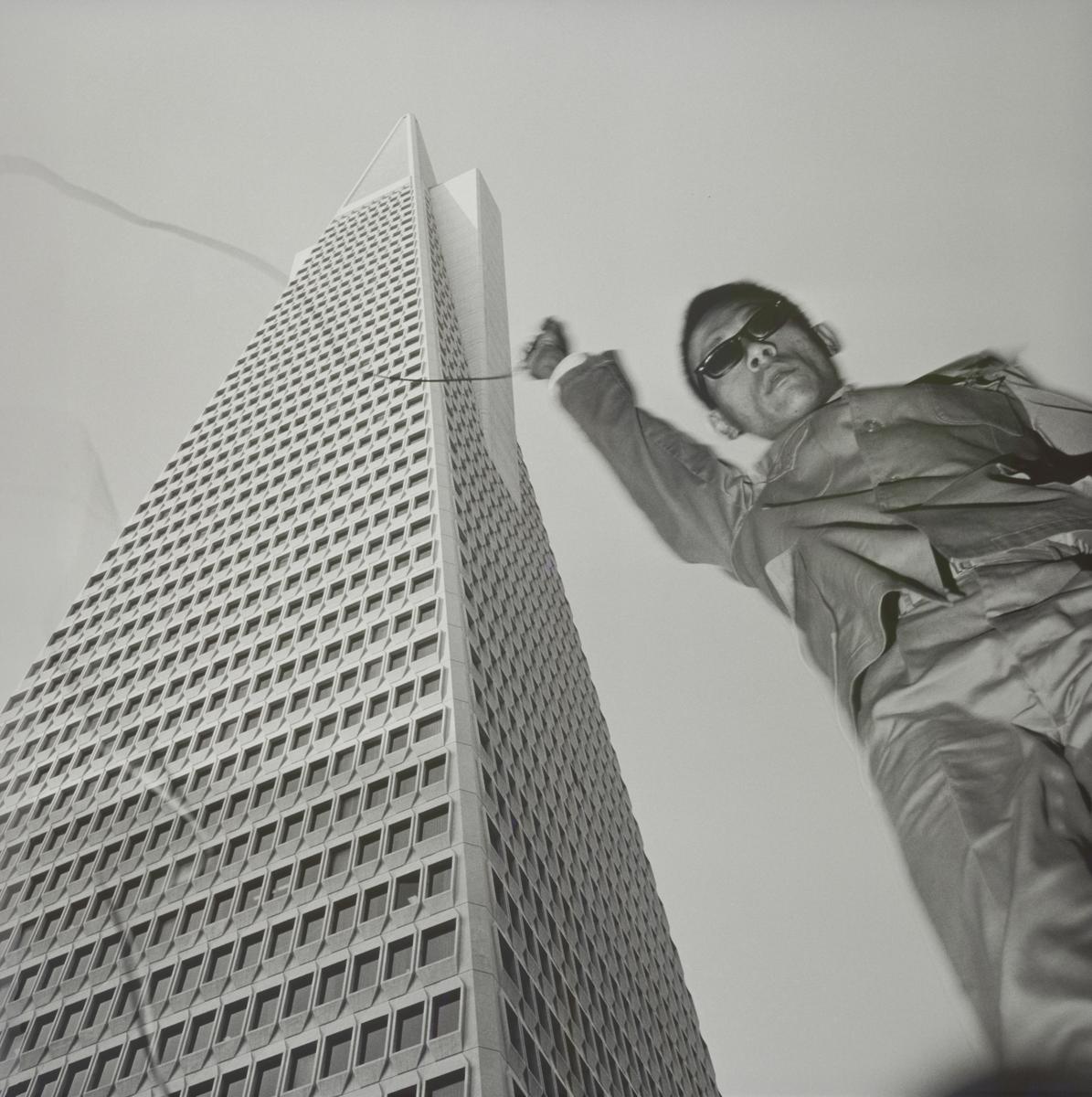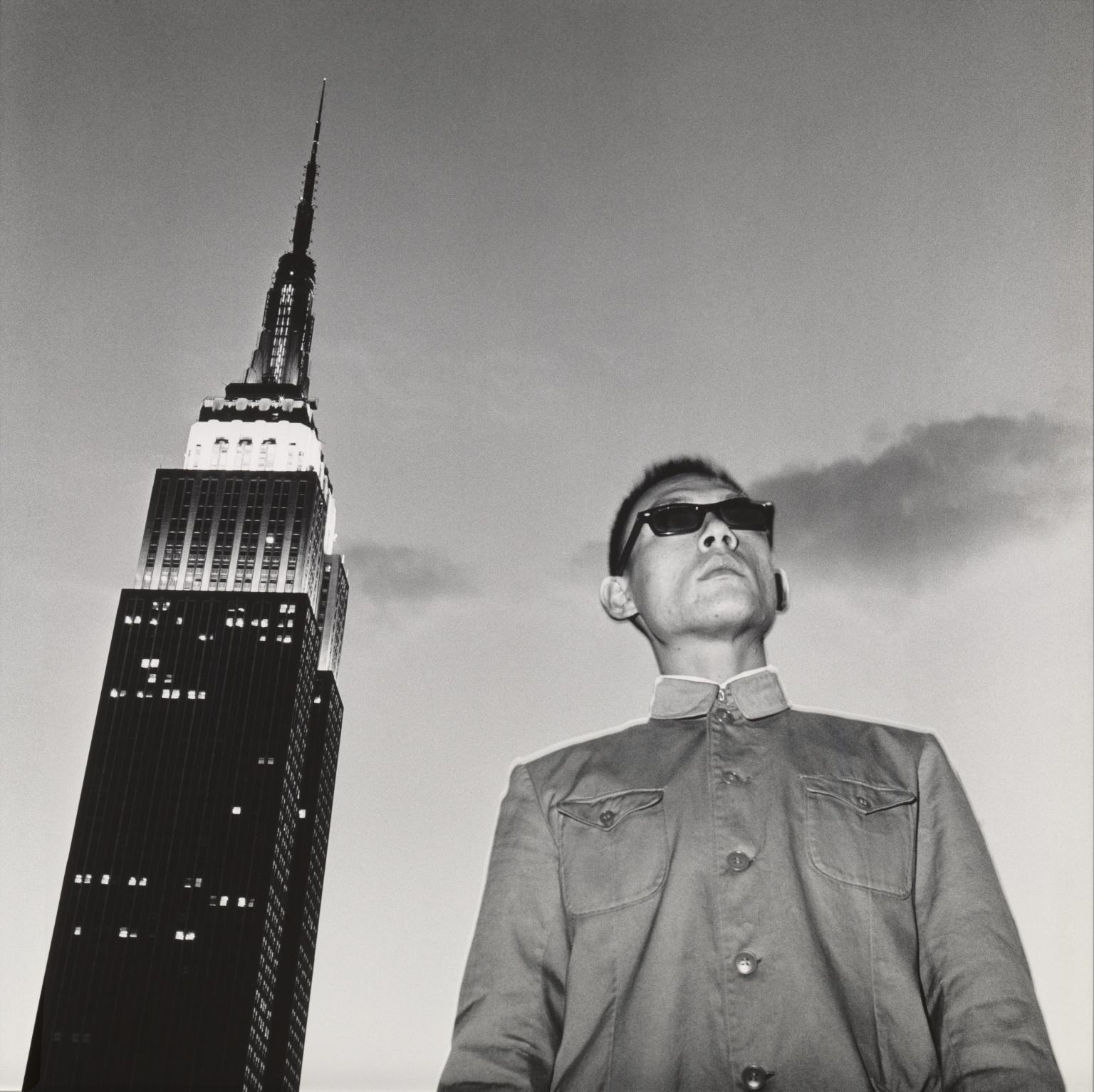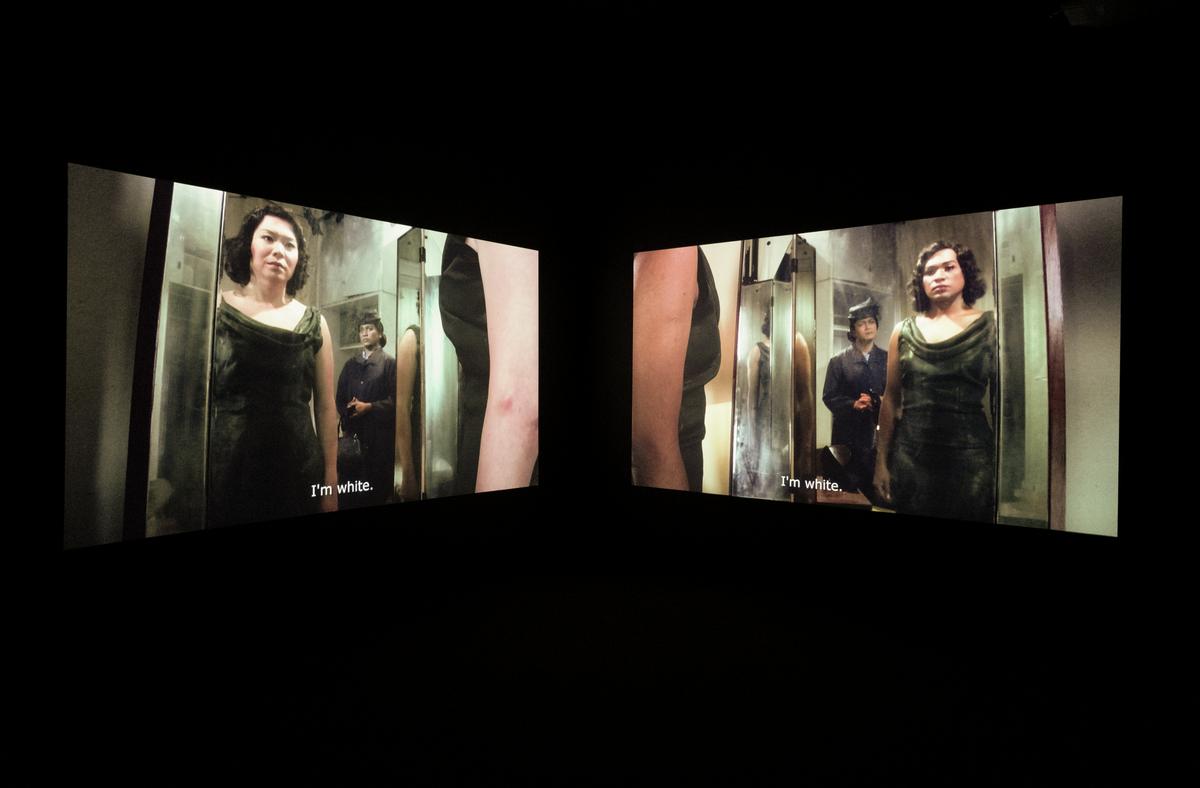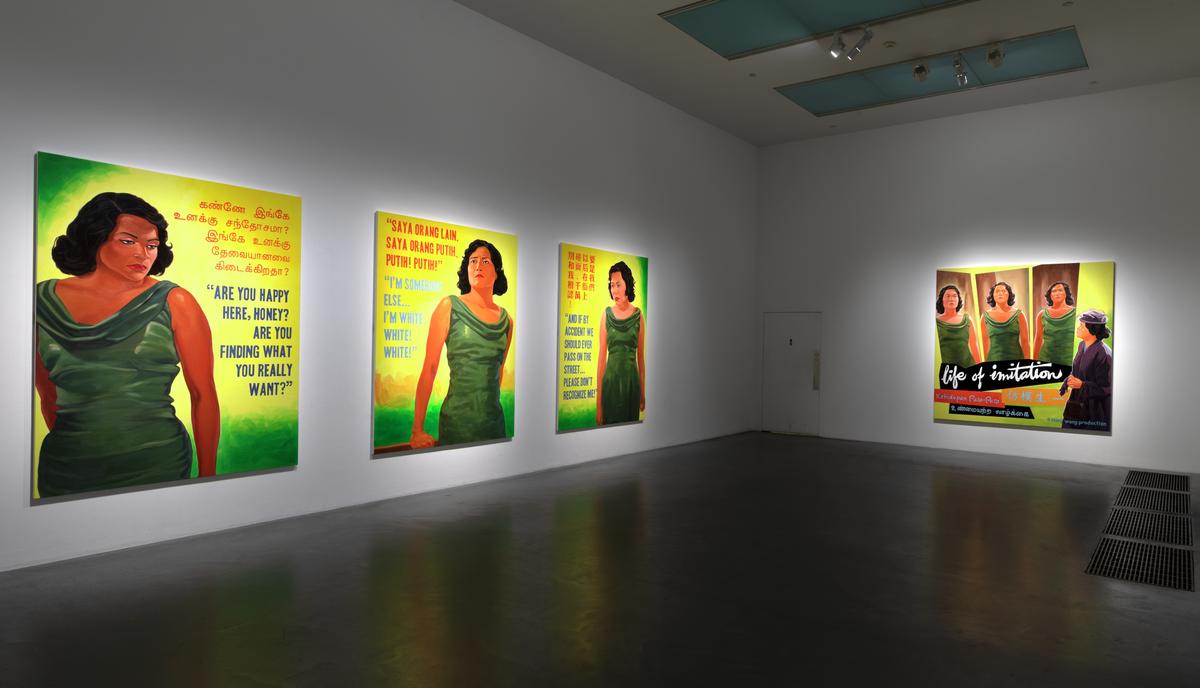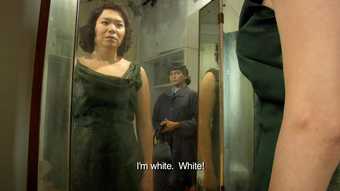12 rooms in Media Networks
Discover two artists who use costume and performance to play with constructions of race, nationality and gender
Ming Wong and Tseng Kwong Chi’s work explores cultural difference and belonging. The artists use re-enactment to confront and subvert societal constructions of race and identity.
Tseng used a large-format camera and shutter release cable to stage self-portraits at tourist sites in the US and Europe. He wore a ‘Zhongshan suit’ or ‘Mao suit’ (a tunic-style suit with a flipped collar) to adopt the identity of a Chinese government official. Tseng’s performance reveals the prejudice of observers, who may assume he is a communist foreign dignitary visiting a famous Western landmark. This portrayal contrasts with Tseng’s identity as an artist living and working in New York.
Wong makes artworks that imagine alternative histories of cinema. In Life of Imitation Wong inverts the title of Douglas Sirk’s 1959 Hollywood melodrama Imitation of Life. The film examines racial identity and notions of ‘passing.’* In Wong’s version, he restages an emotionally charged scene between a Black maid and her daughter, who is light-skinned and able to ‘pass’ as white. Wong employs male actors from the three dominant ethnic groups of Singapore: Chinese, Malay and Indian. By casting men in these female roles, Wong draws a connection between the exaggerated movements and expressions of melodrama with that of drag, while also complicating notions of Singaporean identity.
* ‘Passing’ is a term used to describe the act of giving the outward appearance of a different racial identity to one’s own, usually to access social and economic benefits conventionally enjoyed by the more privileged majority.
Art in this room

